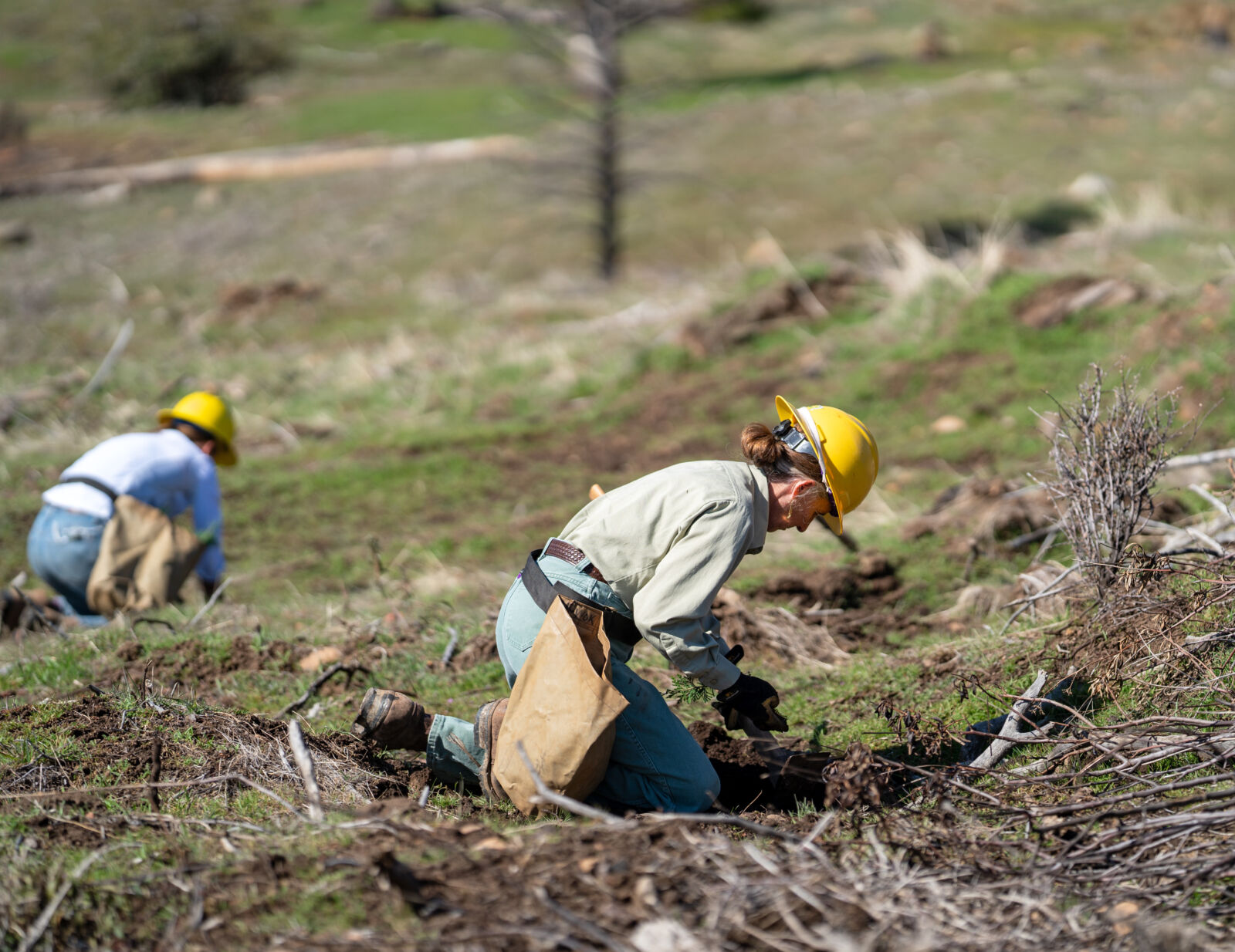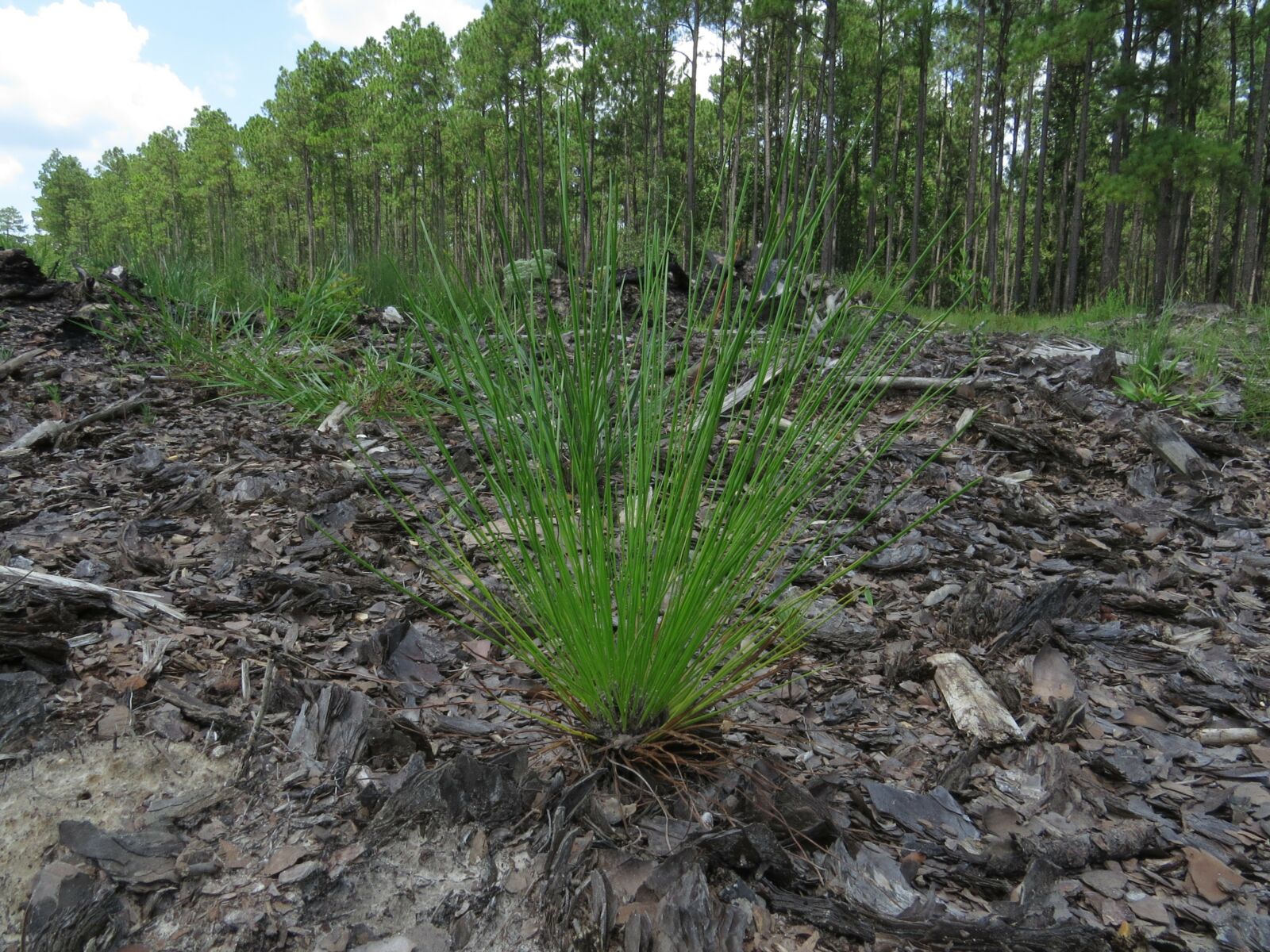Reforesting National Forests is not as simple as placing a seed in a hole, covering it with soil, and hoping it grows. The process is more complicated, integrating the best available science and technology.
Our U.S. Forest Service partners must first consider what areas are most suitable for reforestation. Currently, the Forest Service has a backlog of 1.3 million acres of land in need of reforestation, which the agency expects will take about eight years to address. So, what do experts prioritize?
The majority of the targeted lands in need of reforestation experienced wildfire (more than 80 percent), insect and disease infestations, and other natural disturbances. Many of our projects also plant for native species habitat restoration and to improve resilience and wildlife habitat.

Planting on the Rim Fire burn scar, Stanislaus National Forest. Photo by First Track Productions.
Once a landscape is chosen for reforestation, experts must then decide in which specific areas to plant. Selecting suitable areas for planting within a landscape requires assessing the area’s snowpack, elevation, aspect, and soil productivity and drainage, since each factor determines the long-term survival of the species. South-facing slopes, for example, will have dryer and warmer growing conditions than north facing slopes.
The second major step in reforestation is selecting the right seedling for the site and the intended management goals. All trees produce seeds, whether tucked inside an acorn from an oak tree, in the fruit of an apple tree, or in the cone of a Douglas-fir. The Forest Service has collected, germinated, and stored native seeds for restoration since the National Seed Laboratory was established in the 1950s. Their work not only provides the seeds, grown to young trees (seedlings), necessary for reforestation but also preserves the genetic diversity of native plant species in the U.S.
When selecting trees for reforestation, land managers must consider the right species and even the most suitable elevation and slope. Planting the optimal tree at the compatible site can be the difference between a forest regenerating and a replanted plot dying.

Longleaf pine seedling
Finally, forest managers must decide how to plant the trees, specifically at what time of year and how far apart from other trees. Generally, managers want to plant when water is available. In Colorado, water availability peaks in May or June after the snow has finished melting and before the summer heat has removed water from the soil. But, just south in Arizona, water peaks in August following the monsoons. Optimal tree spacing also varies regionally depending on, for instance, historic conditions, water availability, and fire regimes.
Forest experts study each of these steps in detail to maximize the survival rate of their trees. Thanks to our partnership with the Forest Service, our work to reforest National Forests is guided by the best available science, ensuring that each dollar donated results in a tree planted.
When you donate to the National Forest Foundation’s Reforestation program, you are restoring forests and enhancing the benefits trees provide to our nation’s waterways.

